New Species Added to SWAP
Sandra Johnson
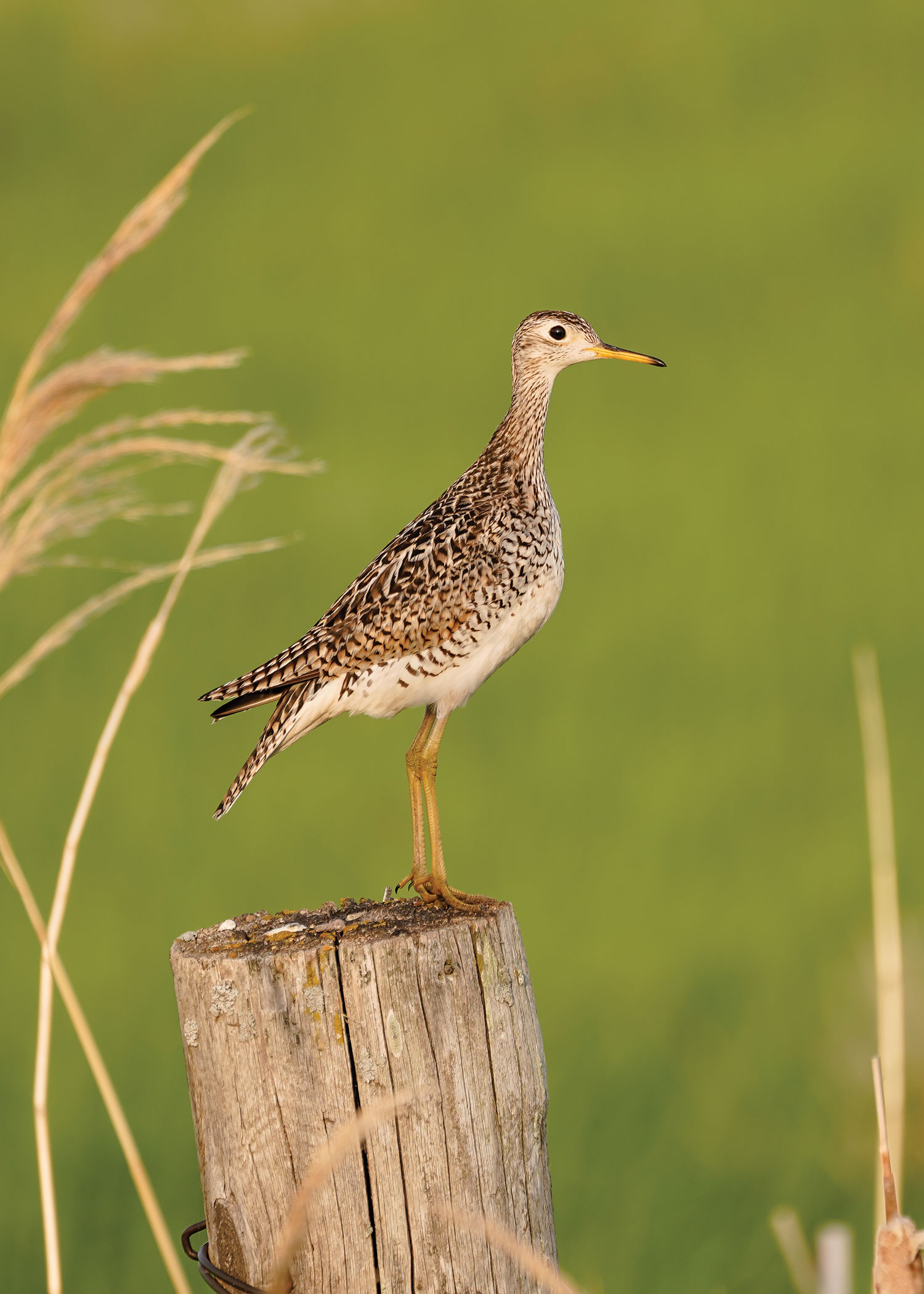
Each spring, North Dakota wetlands are bustling with temporary guests from faraway places, and others that choose to make it their home for summer.
Many are easy to recognize, like the killdeer, great blue heron, and of course, the unmistakable mallard.
But have you ever seen a Hudsonian godwit? This shorebird is about the size of a blue-winged teal, but with much longer legs.
The males are particularly handsome, sporting a dark rufous belly and a bright orange, slightly upturned bill.
After leaving the wintering grounds in southern South America, they fly over the Pacific Ocean toward the Texas Gulf Coast, then up the Great Plains to the Prairie Pothole Region, which may be the first place these birds decide to rest.
They’ve been flying nonstop for several days for 5,000 or 6,000 miles.
It’s estimated there are around 75,000 Hudsonian godwits, at most.
For comparison, the killdeer population is estimated at about 2 million birds.
After refueling in our wetlands for a few days, these far-ranging birds continue to the Hudson Bay, Alaska, and other far northern artic breeding grounds.
In the fall, most make a nonstop trip south over the Atlantic Ocean back to South America.
The Hudsonian godwit, along with 10 other migrant shorebirds that also complete astonishing journeys spanning the globe, are being added to the North Dakota Species of Greatest Conservation Need list (Note: This list was previously referred to as Species of Conservation Priority).
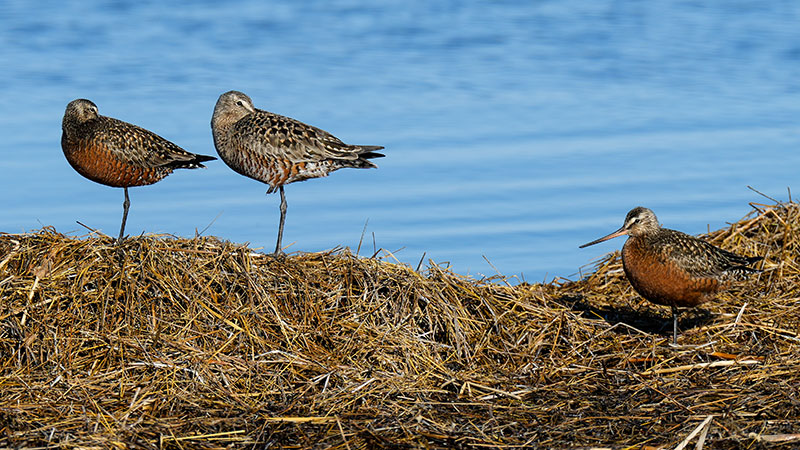
Hudsonian godwits take a break in North Dakota during their spring migration.
These shorebirds are of concern because it’s estimated their population has declined by 70% or more over the past 40 years.
Every state wildlife agency has identified a list of species known to be at-risk or declining as part of their State Wildlife Action Plan.
The SWAPs must identify and focus on the recovery and conservation of SGCNs, yet address the full array of wildlife and wildlife-related issues.
The goal of the SWAP is to conserve and recover declining species and prevent additional species listings under the Endangered Species Act.
However, it’s really a comprehensive strategy for conservation of all our treasured wildlife.
North Dakota’s first State Wildlife Action Plan was completed in 2005, then revised in 2015.
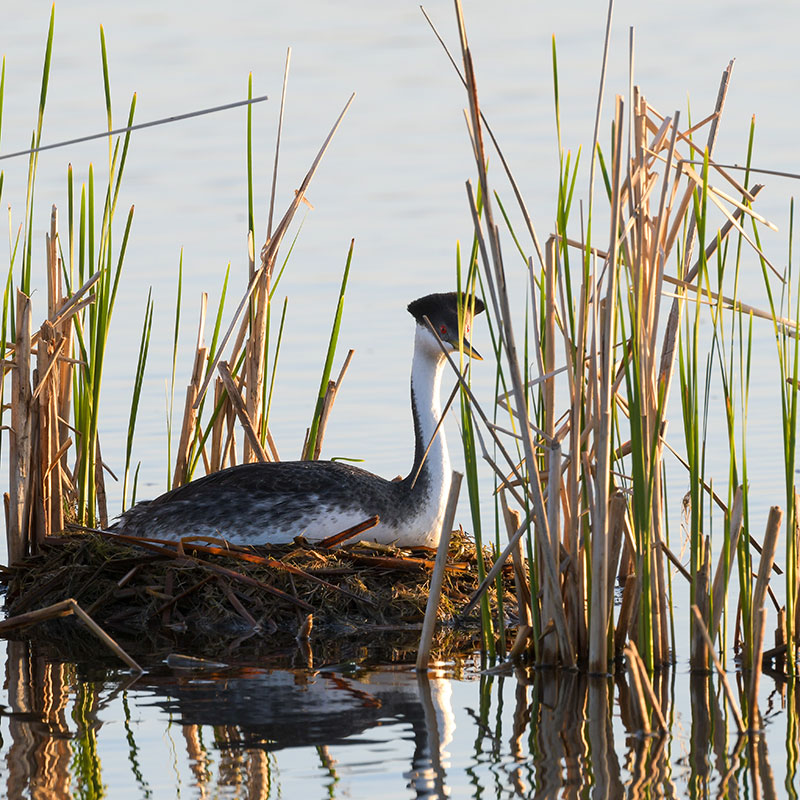 Western greebe
Western greebe
Currently, state Game and Fish Department staff are working on the third revision, with an anticipated completion in fall 2025.
While the SWAP is a habitat-based plan, an important first step is updating the species list.
The 2005 plan identified 100 species, the 2015 plan had 115 species, and our draft list for 2025 is at 133 species.
However, for this revision, we are also looking at a list of Species of Greatest Information Need.
While SGCNs are known to be at-risk or in decline, SGINs face uncertainty in terms of their status, range or level of risk.
We are proposing to add 99 species to the SGIN list.
Thus, the total SGCN and SGIN on the list is 232 species, some of which you may be very familiar with, and others you perhaps never knew existed in the state.
The list ranges from some of the most globally imperiled species, whooping crane and pallid sturgeon, to more common species for which North Dakota represents an important portion of their remaining range, such as Richardson’s ground squirrel and sharp-tailed grouse.
While the latter species show stability in numbers, a large portion of them are found in North Dakota, underscoring our responsibility for their conservation.
The surge in the number of species on the list is in part a result of having Department staff who are more knowledgeable and experienced in our native invertebrate species.
In 2015, we listed a total of 14 invertebrates (four butterflies and 10 freshwater mussels).
For the 2025 list, we conducted a more thorough assessment of bumble bees, solitary bees, beetles, butterflies and skippers, moths, spiders, grasshoppers, caddisflies, stoneflies, mayflies and dragonflies.
A total of 101 terrestrial and aquatic invertebrates have been identified as being at-risk or declining, or in need of more information to determine their status.
The North Dakota Game and Fish Department is the state agency with primary authority over the conservation and management of all wildlife in the state, including invertebrates.
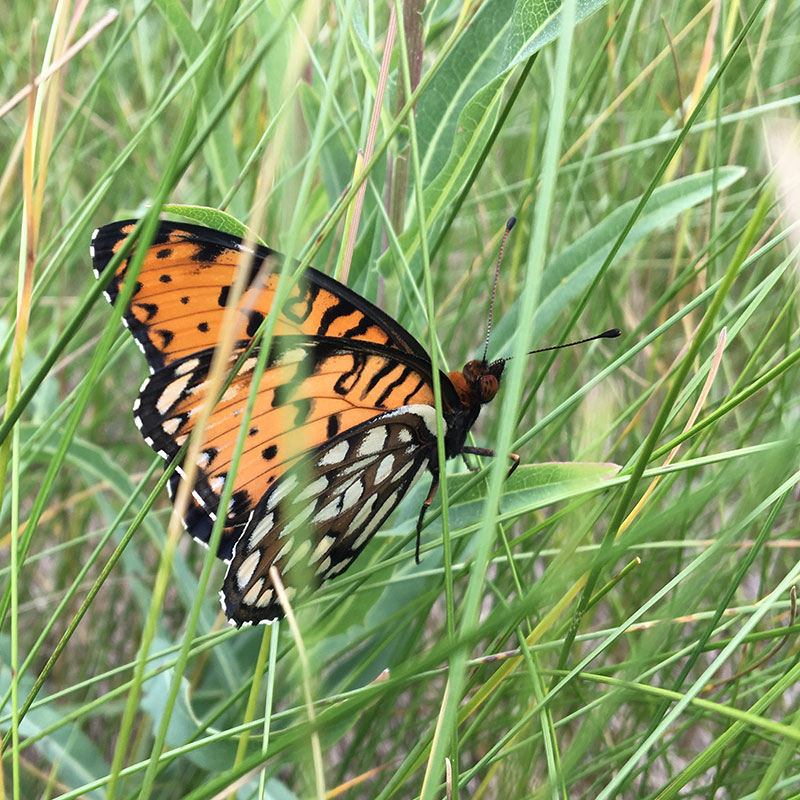 Regal Fritillary
Regal Fritillary
Chances are you’ve read or seen stories about the diminishing populations of pollinators, namely the monarch butterfly.
But have you ever heard of an Edwards’ hairstreak, nude yellow loosestrife bee, plains stripetail, or giant case maker? Invertebrates can be generalists, specialists or predatory.
You may find Edwards’ hairstreak (which is a butterfly, by the way) feeding on the nectar of milkweed, goldenrod, or sweet clover.
Others are specialists, like the nude yellow loosestrife bee, which is entirely dependent on one species of wetland plant, fringed loosestrife.
This native bee collects oil, not pollen, from the plant’s yellow flowers to line its nest for the young bee larvae to feed on.
The plains stripetail is a stonefly species, and the giant case maker, a type of caddisfly, which are well known aquatic invertebrate families among fly anglers.
Finding these species in a river, stream or wetland is a good indicator of water quality.
Not finding them is concerning, not only for their population sustainability, but also for all the other wildlife that feed on them.
Fish eat the aquatic larvae, bats eat the flying adults, and birds eat both.
Perusing the list offers a broad perspective of the variety of wildlife in our state, going beyond the usual focus on walleye, deer and pheasants.
What they all have in common, though, is the need for healthy, resilient habitat and sustainable landscapes.
Most of the species on the list depend on grassland habitats, be it native or unbroken prairie, or planted/restored grassland.
When the first plan was developed in 2005, all the grassland in the state would fit into 20 of the 53 counties.
Now, in 2024, all the remaining grassland in the state will fit into 16 counties.
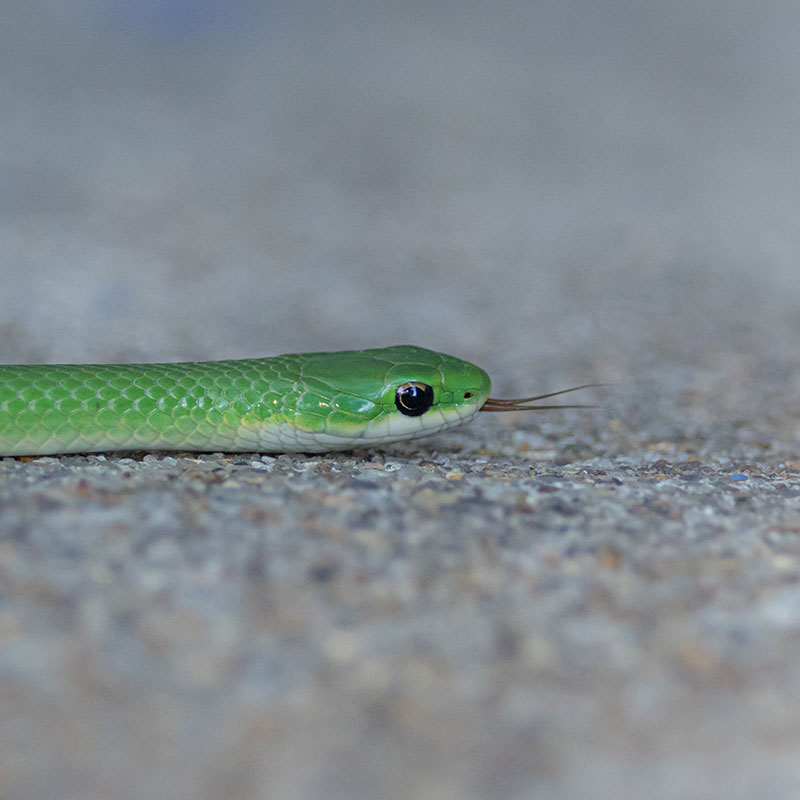 Smooth green snake
Smooth green snake
We’ve lost four counties worth of grassland in 20 years.
That’s a lot less habitat for a wide range of wildlife that flourish in grasslands.
Another popular habitat for species on the list is wetlands.
The next time you look at a wetland, be it a wet or dry seasonal wetland in an agriculture field, a semipermanent hemi-marsh, or a large lake, try to imagine all the aquatic life below the surface.
It’s easy to focus on the benefits of wetlands to birds, but it’s more challenging to consider the life cycle needs of the aquatic communities we can’t see.
The most picturesque places in the state, like the badlands or native forests, are not just advertisement worthy, but unique habitat where a handful of species on the list can only be found.
There were five recurrent conservation actions identified in the 2015 plan that we still see as the top actions for the recovery and conservation of species in the 2025 plan:
- offer incentives and programs to protect, enhance and restore habitat;
- urge ecologically responsible ordinances and suitable reclamation standards;
- promote and support regenerative grazing and work with grass-based agriculture groups;
- use best management practices or ecological site descriptions; and
- public education and outreach.
The key to success is partners.
State, local, NGOs and federal agencies are contributors and implementers, along with private landowners and tribal nations.
 Franklins ground squirrel
Franklins ground squirrel
Strengthening and diversifying conservation, agriculture and industry partnerships is also essential to successful implementation of the plan.
The State Wildlife Action Plan set the foundation for, or is an integral element, of many conservation efforts today.
For example, the SWAP and its species or habitats are often referenced in Outdoor Heritage Fund proposals.
The Meadowlark Initiative, a collective effort of conservation, agriculture and industry partners to enhance, restore and sustain native grasslands in North Dakota, originated because our state bird and SGCN, the Western meadowlark, is declining 1.3% per year.
And the recently completed Landscape Forest Stewardship Plan for the Turtle Mountain Landscape highlights the importance of this unique forest for SGCNs and identifies goals and objectives to guide management toward sustaining forest for future generations.
You also play a crucial role in the State Wildlife Action Plan, as the actions you choose to take, whether it’s creating a pollinator garden or managing grasslands with sustainability in mind, can have a significant impact.
The North Dakota State Wildlife Action Plan is not just the North Dakota Game and Fish Department’s vision for healthy and diverse wildlife populations and habitat resources.
Wildlife is entrusted in the care of state wildlife agencies to be safeguarded for you, the public.
And not just for now, but for future generations to experience.
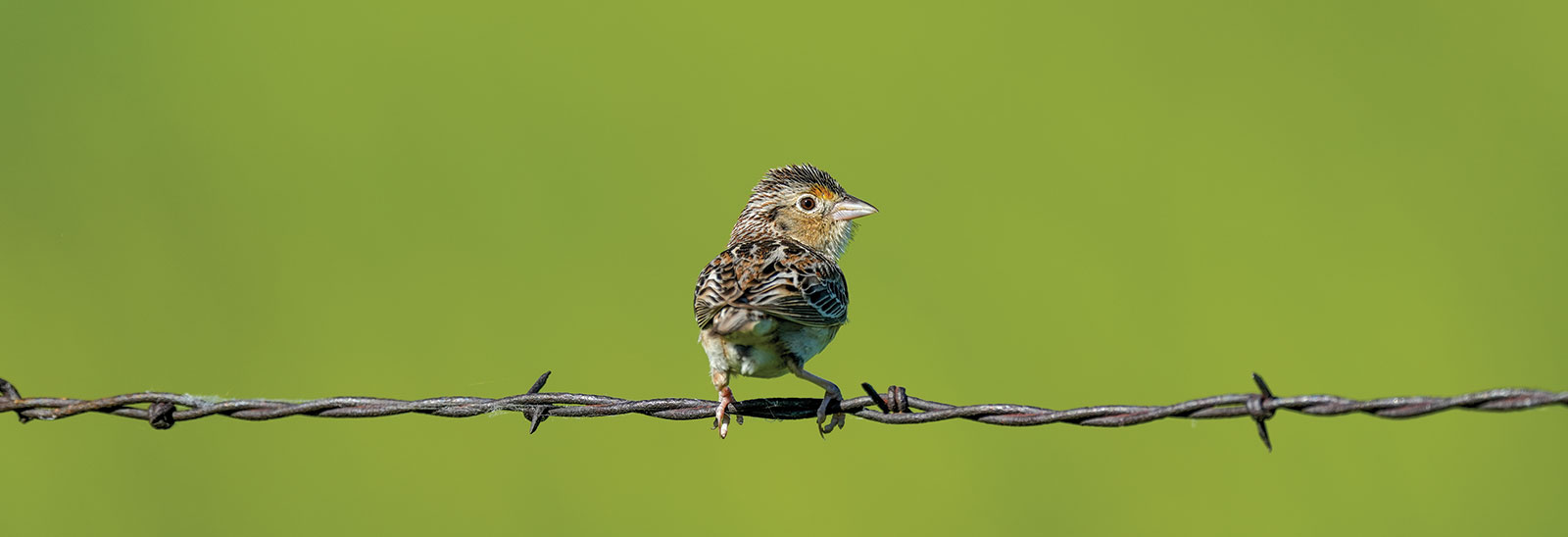 Grasshopper Sparrow
Grasshopper Sparrow


 Grasshopper Sparrow
Grasshopper Sparrow
 Western greebe
Western greebe Regal Fritillary
Regal Fritillary Smooth green snake
Smooth green snake Franklins ground squirrel
Franklins ground squirrel